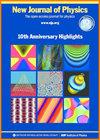优化信息驱动的认知分配,控制由活动引发的流行病传播
IF 2.8
2区 物理与天体物理
Q2 PHYSICS, MULTIDISCIPLINARY
引用次数: 0
摘要
在当代,流行病的出现促使相关信息的传播大幅增加,通过同时减少活动接触和加强个人防护措施来增强个人的抗感染能力。为了阐明这一错综复杂的动态变化,我们引入了一个复合四层网络模型,旨在捕捉信息驱动的意识、人类活动和流行病传播之间的相互作用,重点关注个人有限注意力在减少活动频率和自我感染率方面的分配。我们发现的一个有趣现象是,意识权衡与流行病传播之间存在一种反常的、凹陷的非单调关系,在最低意识效力处于中间状态时,这种关系更为明显。这突出表明,通过降低活动频率来放松自我保护或通过加强自我保护来弥补活动频率的增加都是不可取的。尤其值得注意的是,在信息传播和内在活动需求增加的情况下,加强自我保护以降低感染风险具有重要意义。然而,在辅助活动频率增加的情况下,重点应完全转向减少活动暴露。该模型为准确预测疫情爆发时的宣传效果确定了一个理论阈值。最佳意识分配始终处于两个极端--要么完全避免不必要的活动接触,要么采取全面的自我保护。这种指导取决于信息水平和活动需求,为个人行为与流行病预防之间的微妙平衡提供了宝贵的见解。本文章由计算机程序翻译,如有差异,请以英文原文为准。
Optimizing information-driven awareness allocation for controlling activity-triggered epidemic spread
In the contemporary era, the advent of epidemics instigates a substantial upswing in relevant information dissemination, bolstering individuals’ resistance to infection by concurrently reducing activity contacts and reinforcing personal protective measures. To elucidate this intricate dynamics, we introduce a composite four-layer network model designed to capture the interplay among information-driven awareness, human activity, and epidemic spread, with a focus on the allocation of individuals’ limited attention in diminishing activity frequency and self-infection rates. One intriguing observation from our findings is an anomalous, concave non-monotonic relationship between awareness trade-off and epidemic spread, with a more pronounced prevalence at an intermediate least awareness efficacy. This underscores the inadvisability of relaxing self-protection through reduced activity frequency or compensating for increased activity frequency by enhancing self-protection. Especially noteworthy is the significance of enhancing self-protection in response to heightened information dissemination and inherent activity demands to curtail infection risk. However, in scenarios with increasing ancillary activity frequency, the emphasis should exclusively shift towards reducing activity exposure. The model establishes a theoretical threshold for accurately predicting awareness efficacy in epidemic outbreaks. Optimal awareness allocation consistently resides at the extremes—either completely avoiding unnecessary activity contact or adopting full self-protection. This guidance, contingent on information level and activity demand, offers valuable insights into the delicate balance between individual behaviors and epidemic prevention.
求助全文
通过发布文献求助,成功后即可免费获取论文全文。
去求助
来源期刊

New Journal of Physics
物理-物理:综合
CiteScore
6.20
自引率
3.00%
发文量
504
审稿时长
3.1 months
期刊介绍:
New Journal of Physics publishes across the whole of physics, encompassing pure, applied, theoretical and experimental research, as well as interdisciplinary topics where physics forms the central theme. All content is permanently free to read and the journal is funded by an article publication charge.
 求助内容:
求助内容: 应助结果提醒方式:
应助结果提醒方式:


